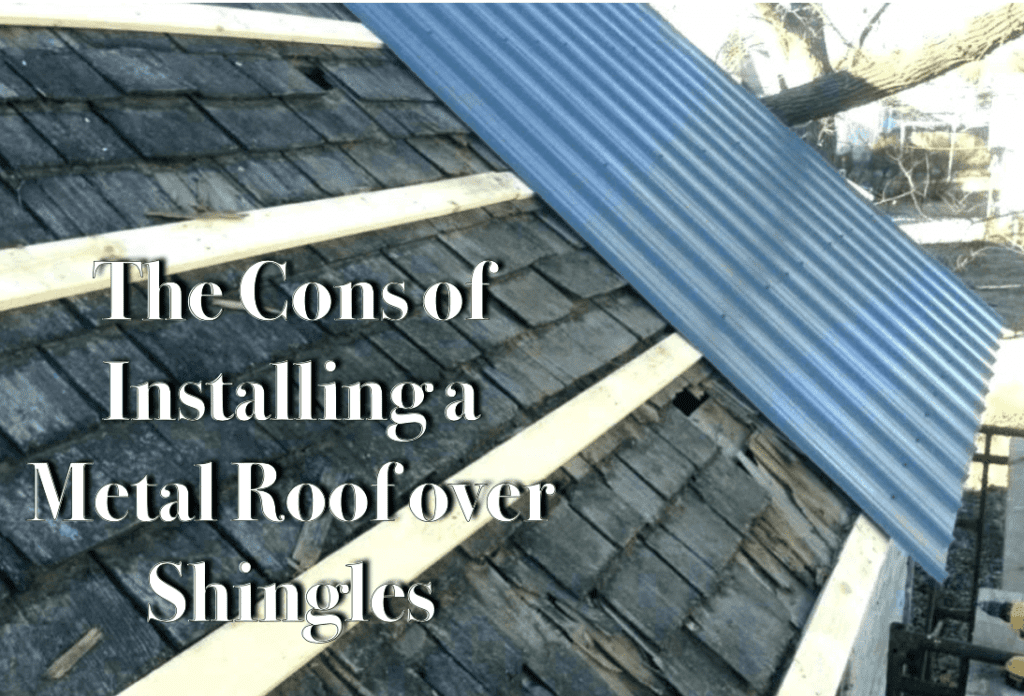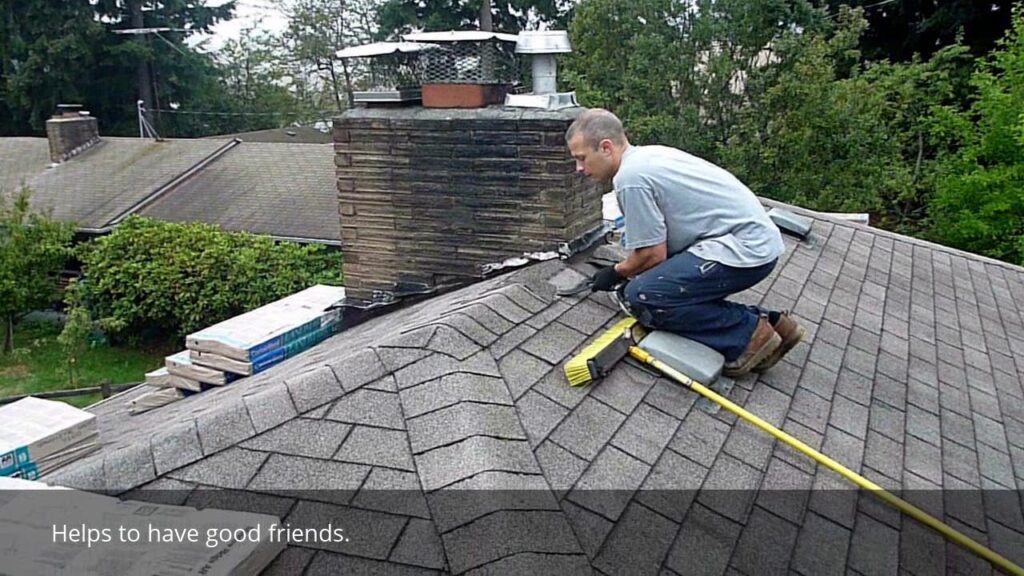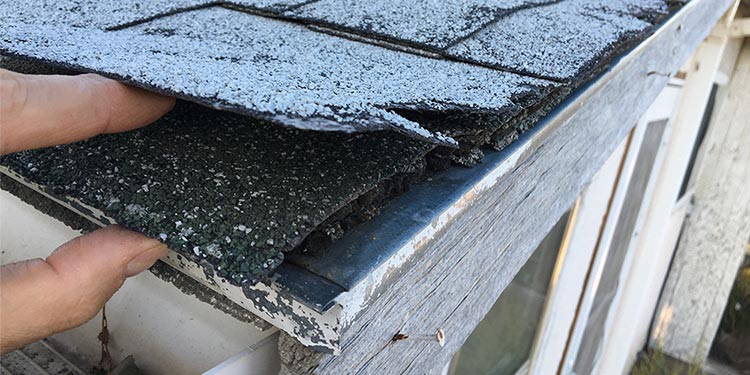In search of a cost-effective solution for your deteriorating roof? Look no further! This article explores the question on everyone’s mind: Can you reroof over old shingles? Whether you’re a homeowner or a contractor, find out if this is a viable option for your roofing needs. Discover the benefits, potential risks, and expert advice to make an informed decision. Say goodbye to costly and time-consuming tear-offs and hello to a potential time-saver. Let’s uncover the truth about reroofing over old shingles!
Roofing over old shingles: What you need to know

Understanding reroofing
Reroofing is the process of adding a new layer of shingles on top of an existing roof. It is a common practice because it offers a cost-effective solution to homeowners who want to refresh the appearance of their roof without going through a complete roof replacement. However, there are important factors to consider before deciding to reroof over old shingles to ensure the safety and longevity of your roof.
Advantages of reroofing
There are several advantages associated with reroofing that make it an appealing option for many homeowners. First and foremost, reroofing is usually more cost-effective than a complete roof replacement. By eliminating the need for labor-intensive shingle removal and disposal, you can save on both time and money. Reroofing also minimizes the disruption to your daily life since the process is typically quicker and less invasive. Additionally, reroofing allows you to preserve your existing roof structure, which can be beneficial if it is in good condition.

Potential drawbacks of reroofing
While reroofing offers numerous advantages, it is crucial to consider the potential drawbacks as well. One significant drawback is the potential for concealed damage under the old shingles. Reroofing may not address underlying issues such as leaks or rotting wood, which could affect the longevity of your new roof. Additionally, reroofing may not be suitable for roofs with extensive damage or multiple layers of shingles. Weight limitations are another concern, as adding another layer of shingles could exceed the maximum load capacity of your roof. Furthermore, there may be local building codes and regulations that prohibit reroofing, so it’s important to check with your local authorities before proceeding.
Determining if your roof is suitable for reroofing
Before embarking on a reroofing project, it is essential to assess the condition of your roof to determine if it is suitable for reroofing. Several factors come into play when making this evaluation. The number of existing shingle layers is a crucial consideration, as most building codes restrict the number of layers to two. Extensive damage to the existing shingles, such as curling, cracking, or missing sections, may also indicate that reroofing is not a viable option. The roof slope and the presence of moisture or mold should also be taken into account, as these factors can affect the longevity of the new shingles. Furthermore, the structural integrity of the roof deck needs to be evaluated to ensure it can support the additional weight.

Consulting a professional roofer
When considering reroofing, consulting a professional roofer is essential to obtain an accurate assessment of your roof’s condition and receive expert recommendations. A professional roofer will have the expertise to identify any underlying issues that could affect the success of a reroofing project. It is crucial to choose a reputable roofer with proper credentials and experience in reroofing. Obtaining multiple quotes from different roofers will allow you to compare prices and ensure you’re getting a fair deal. Once you’ve selected a roofer, it is important to understand their recommendations and ask any questions you may have before proceeding.
Preparation before reroofing
Proper preparation is key to a successful reroofing project. Before starting any work, it is important to gather any necessary permits required by local building codes and regulations. It’s also considerate to notify your neighbors about the upcoming construction work, as it may cause temporary disruption in the neighborhood. Clearing the work area of any obstacles and protecting surrounding landscaping will help to minimize the risk of damage during the reroofing process. Finally, ensuring you have all the necessary equipment and tools on hand will streamline the project.

Removing old shingles
Before installing new shingles, the old shingles must be thoroughly removed. There are different methods for shingle removal, including using a shingle scraper or a roofing tear-off tool. It is important to be cautious during this process to minimize the risk of injury and damage. Additionally, proper disposal of the old shingles is necessary. Many waste management companies provide special containers for shingle disposal, or you can inquire with your local authorities about the appropriate disposal options in your area. It’s crucial to identify and address any potential hazards, such as nails or sharp debris, to ensure a safe environment for the roofing crew and anyone else on the property. Cleaning the roof thoroughly after shingle removal is also necessary to eliminate any debris that could interfere with the installation of the new shingles.
Inspecting the roof deck
Once the old shingles are removed, it is important to inspect the roof deck for any damage. This step is crucial in identifying any underlying issues that may need to be addressed before proceeding with the reroofing. Look for signs of rotting wood, water damage, or weakened areas that could compromise the integrity of the new shingles. Repairing any damage at this stage will help to ensure a solid foundation for the new roof and prevent any future issues.

Repairing any damage
If any damage is found during the roof deck inspection, it is important to repair it promptly before installing the new shingles. Depending on the nature and severity of the damage, repairs may range from simple fixes to more extensive reconstruction. Consulting with a professional roofer at this stage is crucial to determine the best course of action and ensure the repairs are carried out correctly.
Applying underlayment
After the roof deck has been inspected and repaired, the next step is to apply underlayment. Underlayment is a layer of protective material that acts as a barrier between the roof deck and the shingles. It helps to prevent leaks and provides an additional layer of insulation. There are different types of underlayment available, such as asphalt-saturated felt and synthetic materials. The choice of underlayment will depend on factors such as the climate and local building codes. Applying underlayment properly is crucial for the longevity and performance of the new roof.
Process of reroofing
Once the preparation work is complete, the process of reroofing can begin. Let’s walk through the main steps involved in reroofing:
Gathering necessary tools and materials
Before starting the installation of new shingles, ensure that you have all the necessary tools and materials on hand. This includes the appropriate size and type of shingles, nails, adhesive, flashing, and any other supplies recommended by your roofer. Having everything ready will make the process smoother and prevent unnecessary delays.
Installing new shingles
The installation of new shingles is a step-by-step process that requires precision and attention to detail. Start by laying the first row of shingles along the eaves of the roof, ensuring they are aligned correctly. Each subsequent row should slightly overlap the one below it. Use the appropriate nails and adhesive as recommended by the manufacturer and your roofer. Pay close attention to the placement of nails to ensure proper sealing and prevent water infiltration.
Choosing the right shingles
Choosing the right shingles for your reroofing project is crucial for both aesthetics and performance. Consider factors such as the climate in your area, the architectural style of your home, and your budget. There are various types of shingles available, including asphalt, wood, metal, and slate. Each material has its own advantages and characteristics, so it’s important to discuss the options with your roofer and choose the one that best suits your needs.
Ensuring proper ventilation
Proper ventilation is essential for the longevity and energy efficiency of your roof. During the installation process, it’s important to ensure that the attic is properly ventilated. This can be achieved through the installation of ridge vents, soffit vents, or other ventilation systems recommended by your roofer. Adequate ventilation will help prevent moisture buildup, which can lead to mold growth and damage to the roof structure.
Applying flashing
Flashing is a crucial component of a well-installed roof. It is used to seal joints and transitions between different parts of the roof, such as the areas around chimneys, skylights, and vents. Properly installed flashing helps to prevent water from infiltrating these vulnerable areas. Your roofer will have the expertise to install flashing correctly and ensure proper sealing.
Sealing the roof
Once the new shingles and flashing are in place, the next step is to seal the roof. This involves applying a roof sealant or coating to provide an additional layer of protection against the elements. The type of sealant or coating used will depend on the type of shingles and the climate in your area. Proper sealing will help to extend the lifespan of your new roof and improve its performance.
Final inspection
After the reroofing process is complete, a final inspection is essential to ensure that everything has been installed correctly. This can be done by both the homeowner and a professional roofer. Look for any visible defects, ensure that all shingles are properly aligned and sealed, and check for any areas that may require additional attention. Conducting a thorough final inspection will give you peace of mind knowing that your new roof has been installed properly.
Considerations and precautions
Before deciding to reroof over old shingles, there are several key considerations and precautions that homeowners should be aware of. These include:
Local building codes and regulations
Check with your local building department to ensure that reroofing is allowed in your area. Some jurisdictions may have specific regulations or restrictions regarding reroofing that need to be followed.
Weight limitations
Adding another layer of shingles can increase the weight load on your roof. It is important to determine whether your roof structure can support the additional weight.
Warranty implications
Reroofing may have implications for the warranty of your existing shingles or any new shingles you install. Check with the manufacturer or your roofer to understand how reroofing affects the warranty.
Additional costs
While reroofing is generally more cost-effective than a complete roof replacement, there may be additional costs associated with repairs, underlayment, or other necessary materials. Discuss these potential costs with your roofer and factor them into your budget.
Effects on home value
Reroofing can improve the appearance and functionality of your home, which may positively impact its value. However, it’s important to consider the preferences of potential buyers and the impact of multiple layers of shingles on the overall value of the property.
Impact on energy efficiency
Reroofing may have an impact on the energy efficiency of your home. Consult with your roofer to ensure proper ventilation and insulation to maximize energy efficiency.
Assessing the condition of old shingles
Before reroofing, assess the condition of the old shingles to determine if they are suitable as a base for the new shingles. Curling, cracking, or extensive damage may indicate that a complete roof replacement is required.
Knowing when reroofing is not possible
There are instances where reroofing is not possible or advisable. This includes roofs with severe damage, extensive mold or moisture issues, or roofs with more than two layers of shingles. Consulting with a professional roofer will help determine the best course of action in such cases.
Alternatives to reroofing
While reroofing may be a viable option in many cases, it’s important to consider alternative solutions depending on the condition of your existing roof. Here are a few alternatives to reroofing:
Complete roof replacement
If your roof is in poor condition or has multiple layers of shingles, a complete roof replacement may be necessary. This involves removing all existing shingles and installing a brand new roof. While more expensive and time-consuming than reroofing, a complete roof replacement provides a long-term solution and allows for addressing any underlying issues.
Roofing overlays
A roofing overlay involves installing a new layer of shingles directly on top of the existing ones. Unlike reroofing, a roofing overlay does not require the removal of the old shingles. This option can be cost-effective, but it may not be suitable for roofs with extensive damage or multiple layers of shingles.
Roof coating options
Roof coatings are applied to the existing roof surface to improve its performance and extend its lifespan. They can provide protection against UV rays, water damage, and thermal expansion. Roof coatings are typically used on flat or low-sloped roofs and may not be suitable for all types of roofs.
Considerations for each alternative should be discussed with a professional roofer to determine the most appropriate solution for your specific circumstances.
In conclusion, reroofing over old shingles can offer several advantages, including cost-effectiveness, time-saving, minimal disruption, and aesthetic improvement. However, it is important to evaluate the condition of your roof, consult with a professional roofer, and consider alternative solutions to ensure the best outcome for your home. By making an informed decision and following proper procedures, you can achieve a beautiful and long-lasting roof that enhances the protection and value of your home.